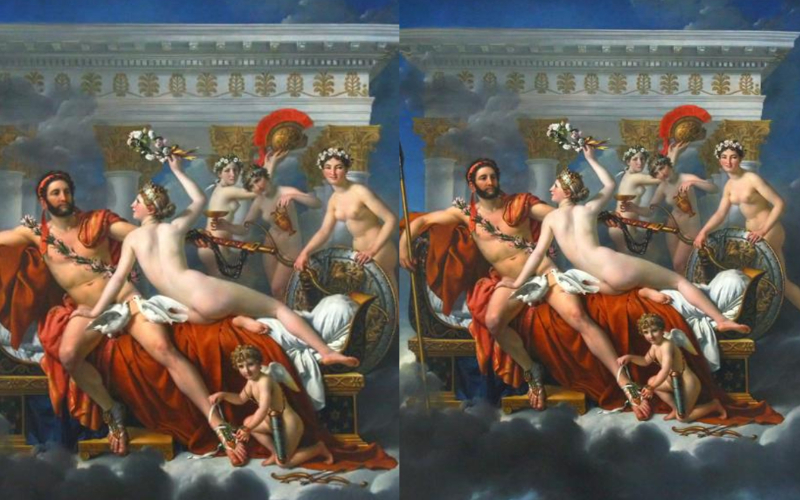The French painter Jacques-Louis David’s final work is titled Mars Being Disarmed by Venus.
During his exile in Brussels, he started it in 1822 at the age of 73 and finished it three years later before his death in an accident in 1825. Realistic and idealistic themes coexist in this piece.
In particular, David combined a realist attention to detail with the idealized shapes of legendary painting. The depiction of masculinity and femininity in the picture, in particular, relies heavily on this blending of two seemingly irreconcilable elements.
From Brussels, David sent the picture to Paris for display, where the Salon was dominated by Romanticism. The painting’s renown has increased over time, despite the original subdued response from reviewers. The Royal Museums of Fine Arts of Belgium in Brussels currently has it on exhibit in the main hall.
Painting Description
It is a large work that stands over 3 m (10 ft) tall. Venus, the goddess of love, with her devotees, the three Graces and Cupid, are portrayed taking away the weapons, helmet, shield, and armor of Mars, the god of war, in front of a temple floating in the sky. Mars gives in to Venus’s charms and allows himself to be disarmed.
The majority of the people David used as models for the painting were people who were associated with the Théâtre de la Monnaie: Marie Lesueur, an actress, modeled for Venus, Lucien Petipa, for Cupid, a subscriber or “abonné” modeled for Mars, and the mistress of the Prince of Orange modeled for one of the Graces.
Perhaps as a result of the artist’s political exile, the picture attracted little attention from critics at first. While discussing the piece, critics tended to focus on its technical merits rather than its political importance. The exiled status of the artist was a topic that critics avoided at all costs, however it’s possible that this made the issue more prominent.


